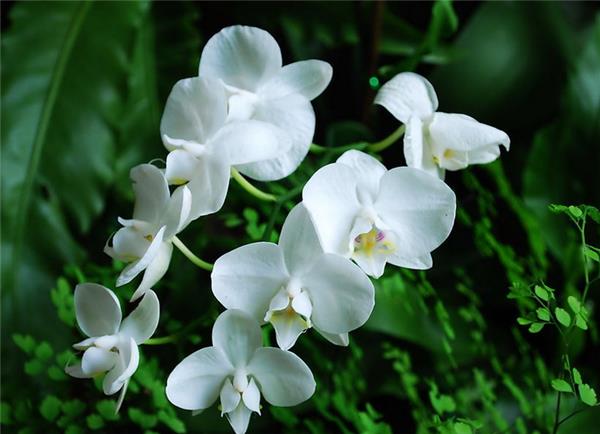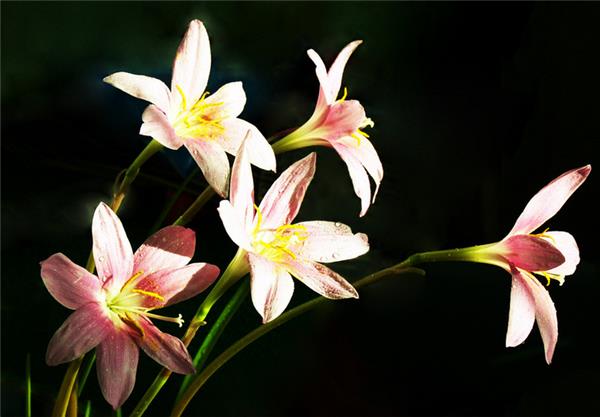Orchid planting method
Orchid is one of the four gentlemen, orchid is a kind of temperament and elegance. It is also a must for indoor plants. Orchids have become the most distinctive element in the field of landscaping. Let's take a look at the planting methods of orchids.

Orchid planting method
Orchids are propagated by sowing and dividing plants.
The seeds of orchids can be sown as they are picked. The orchid has a characteristic, that is, the orchid root must be symbiotic with the orchid to survive. Therefore, sowing often sows the seeds on the basin of the mother plant, using the orchid of the mother plant to grow the teeth. The seeds germinate after about half a year, and can be cultured in a small pot after growing in the mother basin for two months.
The split-plant method is commonly used at present. Due to the different species and persistence of orchids, famous orchids have their own opinions on when it is best to split. Generally speaking, the more suitable time is the spring when the new buds are not coming out and the autumn when the orchids gradually stop growing. Because it is not easy to damage the new buds at this time, the temperature is relatively peaceful, so it is easy to operate and restore the plant. The summer temperature is high, which is the peak growing season of orchids, while the winter is cold, the resistance of plants is weak, and ramets are mostly disadvantageous. It can also be mastered after the flower blossoms. Generally speaking, the flowering in summer and autumn should be in the early spring, and the flowering in early spring should be in the late autumn. This not only does not affect flowering, but also can stimulate the tillering of leaf buds, green leaves and colorful flowers.

When ramet, the mother plant should be removed from the basin, the soil should be cut off and divided into several clumps with knives, each clump should bring 4 pseudobulbs and new buds, and the withered leaves and rotten roots should be trimmed. If you use the wild orchids bought in the market, most of the roots have been withered. Soak in clean water first, after absorbing enough water, wash and clean the roots, dry until the roots turn white before planting.
Orchids can be planted with black mud, peat soil, pastoral soil, pine soil, moss fresh, fern root, bark and so on. The bottom of the basin is covered with tiles, then covered with a layer of broken brick and stone, with a thickness of 1/4 of the depth of the basin to enhance air permeability and drainage, and then spread a layer of culture soil. Plant the orchid, fill the culture soil, and cover the bulb. The soil should be compacted, and the soil should not be filled 2 meters away from Yikou, which is easy to water. After planting, pour enough water and place it in a cool shade. Half a month later, it was moved to a sunny and ventilated environment. In order to increase beauty and moisturizing power, the basin can be covered with a layer of small broken white stone.

There are four precepts in raising orchids: "spring does not come out, summer does not come out, autumn is not dry, and winter is not wet." If the temperature is unstable in spring, it is easy to get cold when you leave the house early. It is safer to check out in early April. Summer should be placed in the shade to avoid direct sunlight and take scattered light to nurture. Autumn is the orchid sprouting period, to maintain the corresponding humidity, avoid drying, orchid root is fleshy, dormant in winter does not need much water, basin soil is wet, do not water too much, so as not to sprout root and leaf diseases.
Fat should be thin and thick: in the growing period. Pour the rotten bean cake water and horseshoe sauce residue water once every semimonthly. The effect is better if an appropriate amount of potassium dihydrogen phosphate is added. No fertilizer is applied in hot summer. When the temperature is too high (more than 32 ℃), water is sprayed several times in addition to watering every day. It is suitable to use slightly acidic water. Often spraying the leaves with clean water can not only improve the growth environment of potted orchids, but also keep the leaves clean and reduce the chance of infection of diseases and insect pests.

Orchids are easy to produce shell insects and can be sprayed with dichlorvos EC 1000. When whitefly is damaged, it should be sprayed with 2000 times solution of deltamethrin. Langen has a sweet taste and is easy to attract ants, which can be killed by meat bones. Orchids are prone to anthracnose and black spot. After the occurrence of the disease, the burning of the diseased leaves should be removed in time, and the distance between the pot plants should be opened to improve the ventilation and light transmission conditions. Reduce water spraying and control humidity. And combined with carbendazim for control.
Related
- Wuhan Hospital Iron Tree Blooming Result Was Instantly Frightened by the Gardener Master
- Which variety of camellia is the most fragrant and best? Which one do you like best?
- What is the small blue coat, the breeding methods and matters needing attention of the succulent plant
- Dormancy time and maintenance management of succulent plants during dormancy
- Minas succulent how to raise, Minas succulent plant pictures
- What are the varieties of winter succulent plants
- How to raise succulent plants in twelve rolls? let's take a look at some experience of breeding twelve rolls.
- Attention should be paid to water control for succulent plants during dormant period (winter and summer)
- Watering experience of twelve rolls of succulent plants
- Techniques for fertilizing succulent plants. An article will let you know how to fertilize succulent plants.



